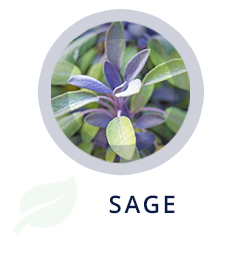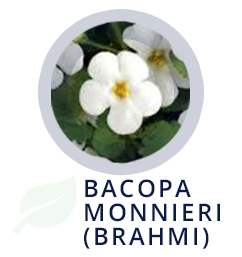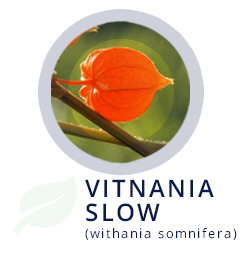 We all expect old age, which will bring us joy and a sense of fulfillment in life. At the same time, we would like to be aware that our perception of the world will not be affected by dementia processes. Unfortunately, the statistics are inexorable and clearly show that about 4% of us after the age of 65 may suffer from Alzheimer’s disease. The number of cases is growing drastically among 80-year-olds and is already 30%. Additionally, each year these numbers increase.
We all expect old age, which will bring us joy and a sense of fulfillment in life. At the same time, we would like to be aware that our perception of the world will not be affected by dementia processes. Unfortunately, the statistics are inexorable and clearly show that about 4% of us after the age of 65 may suffer from Alzheimer’s disease. The number of cases is growing drastically among 80-year-olds and is already 30%. Additionally, each year these numbers increase.
Aggregation of β-amyloid and deposition of protein aggregates in neurons lead to their damage and, consequently, to cellulardeath. So what can we do to help our body against senile dementia as part of preventive health care, and even at an early stage of the disease, taking into account the available plant preparations? Let’s try to get to know selected natural substances that can be successfully incorporated into supportive therapy.
PROPOLIS
Pharmacological drugs used to delay the development of Alzheimer’s disease include: glutamic acid antagonists. These drugs, despite their therapeutic effect, also have side effects. Professor Bogdan Kędzia, an outstanding Polish scientist and expert in the therapeutic effect of bee products, proves that the flavonoid pinocembrin contained in propolis has the effect of limiting the accumulation of β-amyloid in the brain tissue. At the same time, it reduces the permeability of the blood-brain barrier, delays apoptosis of neurons and acts as an antioxidant. Research also indicates that it significantly improves spatial orientation and cognitive function.
Research on propolis from different parts of the world (including the Canary Islands and Brazil) has shown that the highest content of pinocembrin is found in the domestic product. The concentrated ethanol extract of propolis was taken into account, in which there was from 8.4% to 31% of pinocembrin. This gives hope that propolis can be a source of substances used for therapeutic purposes in Alzheimer’s disease.

SAGE
One of the most recognizable plants is sage. Its name comes from the Latin Salvare (to feel good) or Salvus (healthy). Sage was known in ancient Greece, where it was described, inter alia, by Hippocrates, and in the Middle Ages many people wrote about it, among others St. Hildegard.
Scientists from the Medical University of Wrocław have performed a number of studies. Various teams of researchers around the world have included many species of sage (including Spanish, red root and medicinal sage) in their work. The active substances contained in these species include essential oils and rosmarinic acid, as well as terpenoid compounds that may be beneficial in the treatment of Alzheimer’s disease. Sage oil extracts significantly improved concentration and the process of remembering both in young and elderly people (the average age of people included in the study was 73 years).
Similar results were achieved with high doses of powdered sage leaf extract. Responsible for the positive results of the research, among others rosmarinic acid, which has a neuroprotective and antioxidant effect and inhibits the formation of amyloid β.
On the other hand, the investigated terpenoid compounds (tansinones) in red-root sage significantly inhibited cognitive impairment, had antioxidant properties and, similarly to rosmarinic acid, inhibited the process of amyloid accumulation. So the compounds in sage point to another rich plant source that may help fight Alzheimer’s disease.

BACOPA MONNIERI (BRAHMI)
The saponins contained in bacopa monnieri are called bacosides with anti-inflammatory, antioxidant and β-amyloid aggregation inhibiting activity. This plant is particularly well recognized in Eastern medicine (Traditional Chinese Medicine and Ayurveda). Small-leaved bacopa is also called brahmi (“brain tonic”). In Ayurveda, it is used to treat memory loss, inflammation, epilepsy, fever and asthma. Numerous studies confirm that the bioactive ingredients of bacopa monnieri protect the brain against oxidative damage and cognitive decline.
The results of a six-month study in which geriatric patients with Alzheimer’s disease took 300 mg of standardized bacopa monnieri extract twice a day showed that their orientation in time and space, their ability to concentrate, and their linguistic abilities to write, read and understand text improved. Another study with similar results lasted 12 weeks. Additionally, the plant extract proved to be safe and did not bring about any side effects.
Another study with bacopa monnieri (320 mg), including synergistic effects with l-theanine (100 mg), crocus sativum (30 mg), copper (2 mg), folic acid (400 μg), vitamin B and vitamin D3 (25 μg) was conducted in the elderly group for 8 weeks. The results of the study were very promising and showed significant improvements in cognitive functions, coping with stress and depression.
Another in vivo study model with bacopa monnieri (100 mg / kg) showed a significant neuroprotective effect against aluminum chloride AlCl3. Chronic administration and exposure to AlCl3 can cause functional deficits in learning and memory. Increasingly, aluminum and aluminum compounds are mentioned as possible causes of Alzheimer’s disease. A significant reduction in the amount of this element in the body improves cognitive functions. One of the diagnostic methods that allows the detection of excess aluminum in the body is the EHA test – elemental hair analysis.

VITNANIA SLOW (vithania somnifera)
This plant is also known as ashwagandha or Indian ginseng. In Ayurveda, used, inter alia, for the improvement of remembering and in states of general exhaustion. Sluggish Vitiligo extracts are most often available in a dose of 500 mg. It can be used for 4-8 weeks. It works mainly by sensitizing serotonin receptors, which helps to improve memory and learning processes, improves mood and sleep quality, and eliminates aggression and anxiety often associated with Alzheimer’s disease. The available research confirms that vitamin preparations also stop the process of β-amyloid accumulation and support the process of removing this protein from the body.

SEEDING HEMP
A team of South Korean scientists in a 2019 publication presented an overview of available research on the use of hemp preparations in the treatment of Alzheimer’s disease. It turns out that the CBD cannabinoids contained in cannabis are another source of plant support in the fight against neurodegenerative diseases, including Alzheimer’s disease. There is a growing body of evidence and results in the available database of medical research that CBD is effective in blocking the accumulation of β-amyloid in the brain by participating in transport across the blood-brain barrier and out of the brain. CBD also regulates the activity of microglia, thus preventing its over-activation and the accumulation of intracellular tangles (the twisted fibers of the tau proteins). Cannabinoids also reduce inflammation in the brain and aid the repair process by forming new nerve cells. Their action favorably supports the symptoms accompanying Alzheimer’s disease, thus reducing problems related to sleep disorders, depression and anxiety.
The interest in natural substances is still growing and gives hope for further expected results of clinical trials. In nature, we can find many more substances with proven neuroprotective properties and supporting the treatment of Alzheimer’s disease. If we combine their effects in therapy with proper mineral supplementation, based on the results of appropriate diagnostic tests, the effects may be very promising.

MSc. Natalia Chmielecka – certified herbalist – phytotherapist. Natural Medicine Advisor to St. Hildegard. She promotes a healthy lifestyle and popularizes knowledge about herbs by conducting herbal workshops. She runs a kindergarten point with a nature education profile in the Tri-City, promoting healthy eating and horticulture. She conducts online and stationary consultations in the field of diet therapy, phytotherapy and EHA element hair analysis.
Bibliography:
1. Bogdan Kędzia, Elżbieta Hołderna-Kędzia. Pinocembryna – flawonoidowy składnik krajowego propolisu o działaniu opóźniającym rozwój choroby Alzheimera. Postępy Fitoterapii. 2017
2. Zygmunt Zdrojewicz, Damian Pypno, Bartosz Bugaj, Krzysztof Cabała, Mateusz Waracki. Próby zastosowania szałwii w leczeniu zaburzeń poznawczych i choroby Alzheimera. Postępy Fitoterapii. 2015
3. https://rozanski.li/153/bacopa-monnieri-w-fitoterapii/
4. https://www.ncbi.nlm.nih.gov/pmc/articles/PMC6669844/ Bacopa monnieri, a Neuroprotective Lead in Alzheimer Disease: A Review on Its Properties, Mechanisms of Action, and Preclinical and Clinical Studies
5. https://rozanski.li/1028/witania-ospala-withania-somnifera-l-dunal-w-dawnej-i-wsplczesnej-fitoterapii/
6. https://www.ncbi.nlm.nih.gov/pubmed/22308347. Withania somnifera reverses Alzheimer’s disease pathology by enhancing low-density lipoprotein receptor-related protein in liver.
7. https://www.ncbi.nlm.nih.gov/pmc/articles/PMC6970569/A. Review on Studies of Marijuana for Alzheimer’s Disease – Focusing on CBD, THC













